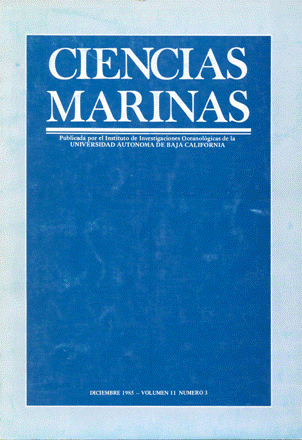Activity of the mexican purse seine fleet and the feeding habits of yellowfin tuna
Main Article Content
Abstract
Results of the analysis of information taken from fishing logbooks and samples obtained from the Mexican purse seine fleet are presented. This information was analyzed independently of the size of the ships and areas of operation. The study includes the time of beginning of sets and the time they were made, the relationship between the number of sets and the time they were made and the monthly variation in 1985. A comparison is made between this information and food volume of yellowfin tuna. It was found that the sets of yellowfin were made almost entirely during daylight hours as observed from the two modal intervals in nearly all the months analyzed; the first one occurs during the morning and the second one during the afternoon. The minimum of sets was registered between 11:00-13:00 hours; only in one case out of the 12 analyzed did the minimum occur between 13:00-14:00 hours (May). Various degrees of gastric depletion were observed throughout the day. However, at 13:00 and 14:00 hours the stomachs were nearly empty, forcing the tuna to look for food in deeper waters, because at this time of day light penetration is maximal, thus leading to a descent of the prey and lowering the vulnerability of the tuna to the fishing fleet. This, in turn, could account for the lesser number of sets at this hour of the day. The most important preys were: red crab (Pleuroncodes planipes), cephalopods Argonauta sp., Dosidicus gigac, Symplectoteuthis ovalaniensis and Onychoteuthis banksii) and the Pacific mackerel (Scomber japonicus).
Downloads
Article Details
This is an open access article distributed under a Creative Commons Attribution 4.0 License, which allows you to share and adapt the work, as long as you give appropriate credit to the original author(s) and the source, provide a link to the Creative Commons license, and indicate if changes were made. Figures, tables and other elements in the article are included in the article’s CC BY 4.0 license, unless otherwise indicated. The journal title is protected by copyrights and not subject to this license. Full license deed can be viewed here.

